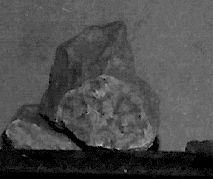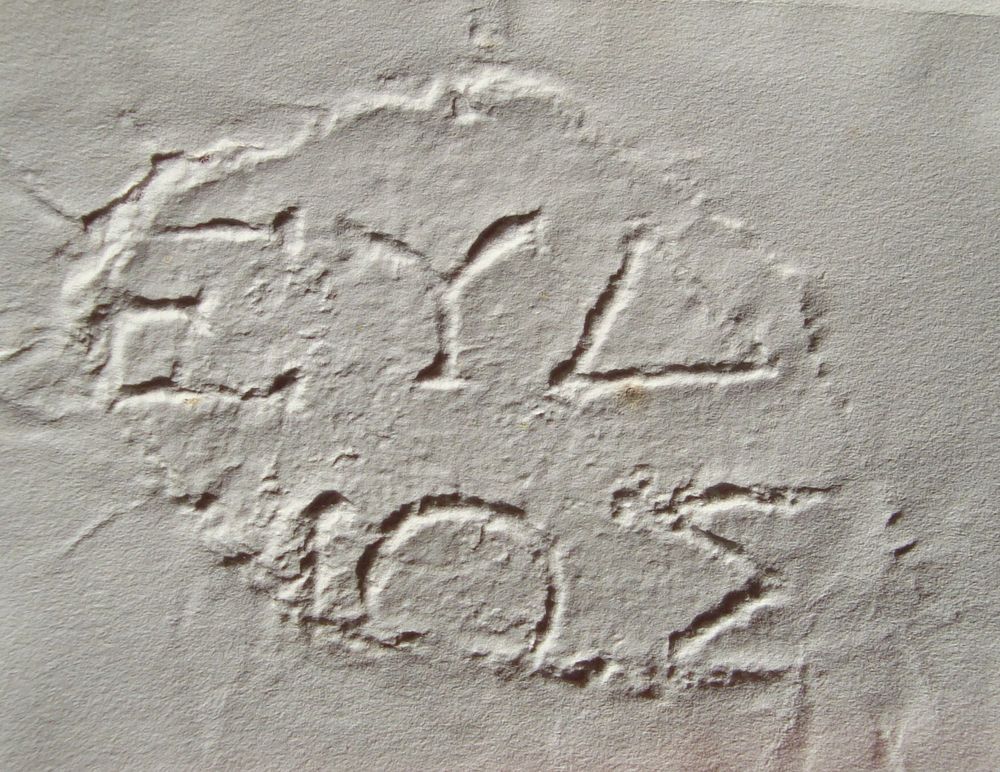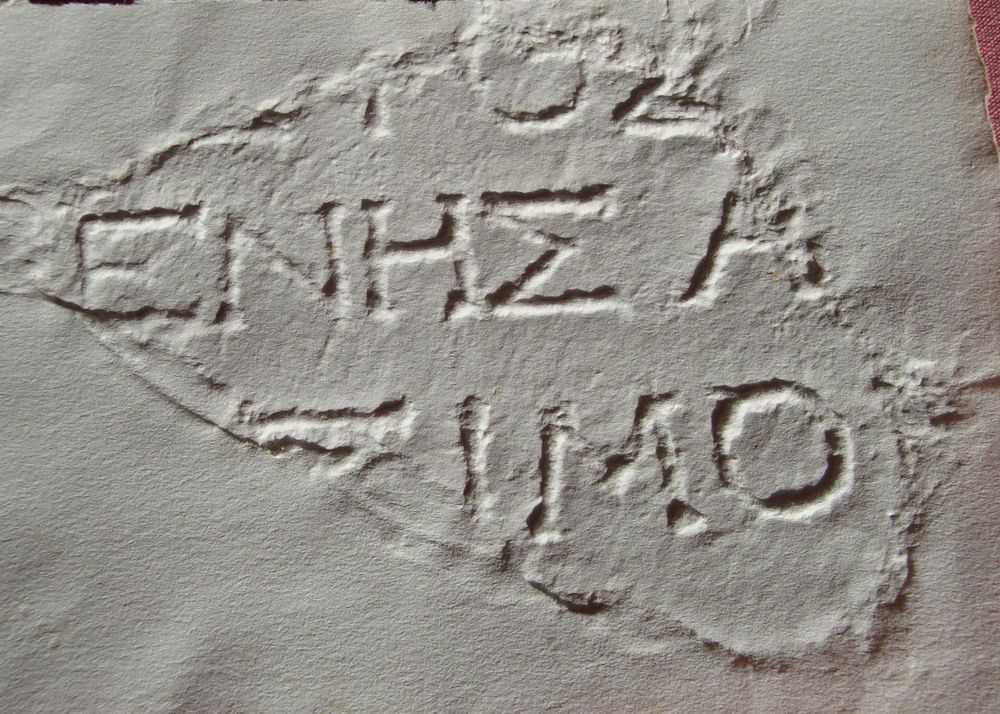EpiDoc XML:
IGCyr1309002
Trismegistos ID:
738856
Source description
Support: Two non adjacent fragments of a white marble block, both broken off everywhere; it cannot even be decided whether they belong to the same face (see commentary) (fragment a w: 0.10 × h: 0.11 × d: 0.08 fragment b w: 0.14 × h: 0.11 × d: 0.08).
Layout: Inscribed on the face(s?) (fragment a w: 0.085 × h: 0.065; fragment b w: 0.10 × h: 0.09) by different hands.
Letters: Hand 1: 0.018, small serifs; smaller and broad delta, calice-shaped upsilon. Hand 2: 0.02, small serifs; very slightly slanting sigma, horseshoe shaped omega. Hand 3: 0.02, no serifs; large omicron, non-slanting sigma. Hand 4: 0.015, very small serifs; epsilon with very long external bars, slightly slanting mu, non-slanting sigma.
Date: Perhaps second century BC (lettering).
Findspot: Found before 1977 at Cyrene ➚: exact findspot unrecorded.
Place of origin: Findspot.
Last recorded location: Cyrene Museum, 573. Seen by C. Dobias-Lalou in 1977 in Shahat: Cyrene Museum.
Text constituted from: Transcription from stone (CDL).
Bibliography
Not published before IGCyr 130900 ➚; Rosamilia 2023, p. 132 (mention) and pp. 265-266, number 16 (text).
Text
Apparatus
b.1: [c. 6 - 7]σ̣τ̣ος Rosamilia 2023: [---]ιος IGCyr
b.2: [c. 5 - 6] Rosamilia 2023: [---] IGCyr
b.3: [c. 6] Rosamilia 2023: [---] IGCyr
French translation
Intraduisible (voir le commentaire).
English translation
Not usefully translatable (see commentary).
Italian translation
Intraducibile (vedi commento).
Arabic translation
غير قابل للترجمة بشكل جيد
Commentary
The similar material of both fragments and their unique inventory number have been taken as a proof that they come from one and the same block. The few preserved segments show that we have a list of names written successively in different hands. The lettering of fragment a seems somewhat earlier than that of fragment b. Both fragments may either come from one and the same face or from two contiguous faces of a large stele, like on other such lists (description of this type of lists at Dobias-Lalou 2016). Rosamilia 2023 argued that we are sure that name and father's name stood on one and the same line only on fragment b, whereas fragment a might as well belong to a lateral and narrower side with name and father's name on two subsequent lines. Therefore, he, perhaps rightly, presented both fragments in the reverse order. However, the order choosen for IGCyr has not been changed here for reasons of clarity.
At a.1, the name should be either Θεύδωρος or Θεύδοτος. We cannot know whether it is a name or a father's name, as the ending at line 2 might be either a nominative or a genitive.
At b.1 Rosamilia 2023 rightly suggests unclear sigma and tau, which leads to a name at the nominative. Moreover, he observes that all attested names in the region with that ending have 6 to 7 letters at the beginning. That allows him to estimate the lacunae at the beginning of the following lines. At b.2, there is a small space before the last preserved letter and this confirms that we have on one line name and father's name. The first name might be a compound in -γένης or -σθένης. At line 3, we have the beginning of the father's name, which was a compound in Τιμο- the second member of which began with an unclear letter. In fact, the best attested names corresponding to those vestiges would be on one part Τιμοκλῆς, on the other Τιμόνοθος. The latter has in local inscriptions several instances earlier than the present one, but we know also of a man bearing that name with a fragmentary father's name Ἀριστ-, mentioned as a Cyrenaean thearodokos at Delphi (Plassart 1921, iv.15) about the date of our list.
CC BY-NC-SA 4.0 Deed Attribution-NonCommercial-ShareAlike 4.0 International License.
All citation, reuse or distribution of this work must contain a link back to DOI: https://doi.org/10.60760/unibo/igcyrgvcyr2 and the filename (IGCyr000000 or GVCyr000), as well as the year of consultation.



